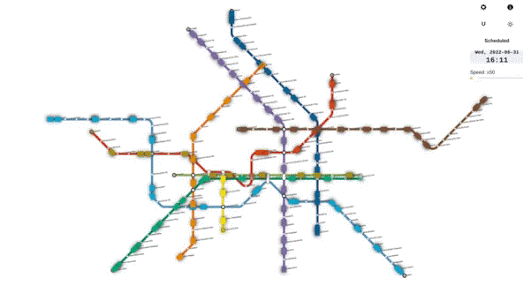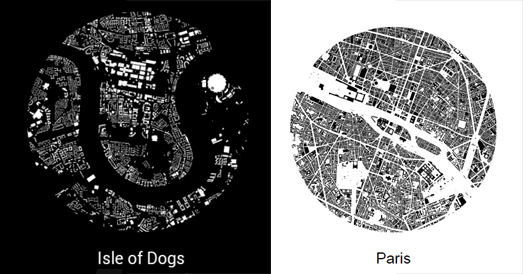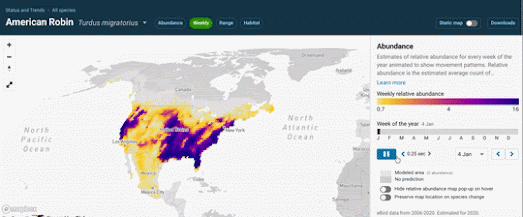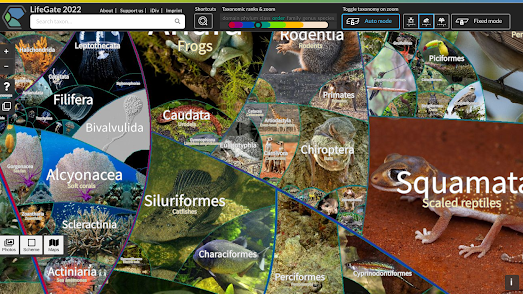LifeGate2022 is a Google Map of life on Earth. It presents a taxonomic map of the 2.6 million known species of life. On the map different species of animals, plants and micro-organisms are organized based on their degree of evolutionary kinship.
LifeGate2022 is the creation of Dr. Martin Freiberg, who is curator of the Botanical Garden at the University of Leipzig. On his map different degrees of taxa are represented as territories separated by colored lines.
What makes Dr. Freiberg's map different from previous taxonomic maps of life on Earth is that it actually uses photographs to illustrate the diversity of life on Earth. The map currently includes over 400,000 photos of different species of life. More photos are being added to the map all the time. Already over 6,000 photos have been added of different organisms by users of the map.
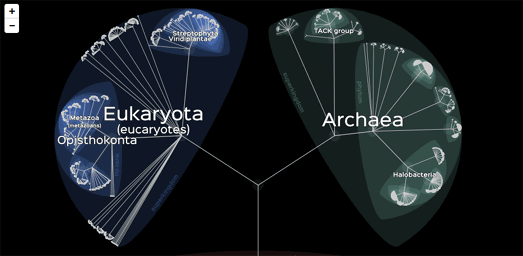
Lifemap is another interactive map which allows you to explore the tree of life. Using this map you can explore the taxonomic classification of over 800,000 different species.
Like LifeGate2022 this map works like other interactive maps - allowing you to explore different taxa by panning and zooming. With Lifemap this means that as you zoom in on a taxa the groups within that classification are revealed. In this way you can carry on zooming into the map and the tree of life until individual species are revealed.
Each node in Lifemap is clickable, so as you zoom into the different taxonomic groups on the map you can click on a node to read its definition and to learn more about the taxa from its Wikipedia entry.
You can also use
OneZoom to explore the complete tree of life on Earth. This application uses an interactive map interface to visualize the evolutionary relationships between all the species living on our planet.
Each leaf on the OneZoom tree of life represents an individual species. The branches represent the lineage of these individual species. The points where the different branches diverge on the tree of life show where different groups have split from one another. At each divergence point you can see the geologic time of when it is believed this divergence took place.
Red leaves on the OneZoom tree of life are those that are currently under the threat of extinction. When you zoom down to the individual leaf of a species you can click on that leaf to learn more about the selected animal from its Wikipedia entry.

